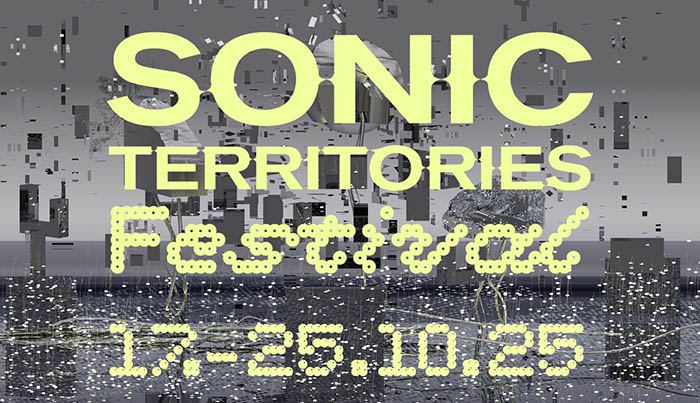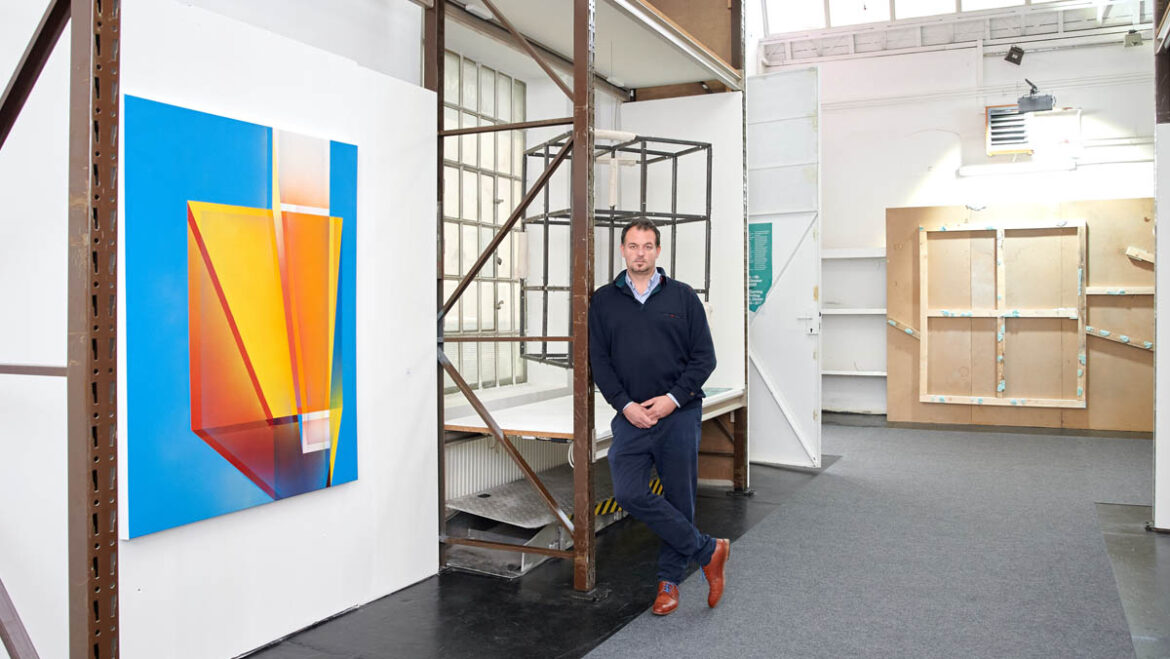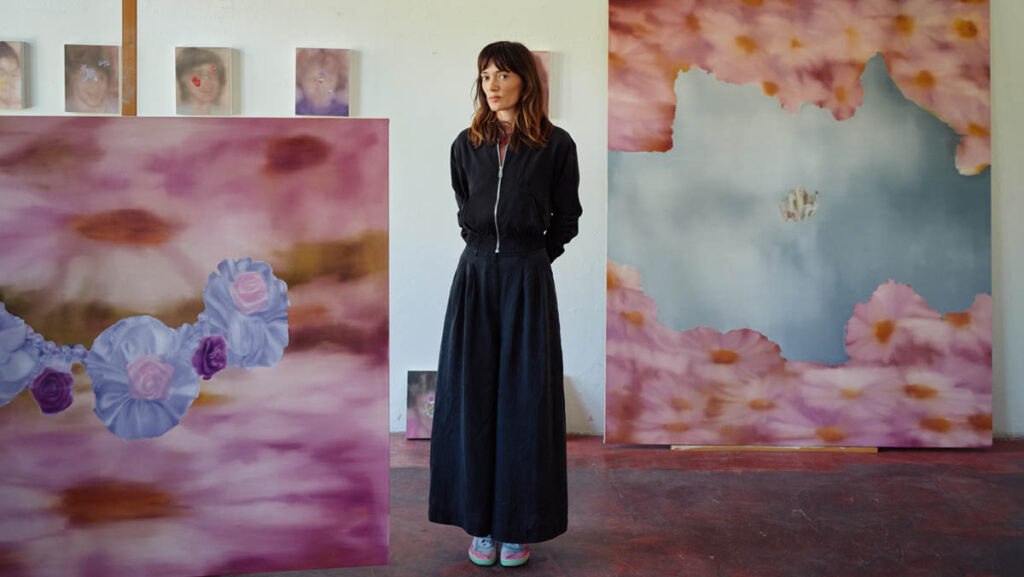We’re here at the first exhibition of gezwanzig projects. In what ways does it differ from the program at your gallery spaces?
My background is in the art trade, where I spent many years working with antiques. Gezwanzig is a relatively young gallery, and it’s been a long-time aspiration of mine. We found the space on Gumpendorfer Straße, which is ideal both in terms of location and in alignment with the gallery’s vision. Additionally, we now have a presence in Innsbruck, which serves as a branch to Vienna, allowing us to establish a strong connection between the two cities and engage with both eastern and western Austria. However, I still felt something was missing. I wanted to organize exhibitions outside the gallery space, and that’s where the new label, gezwanzig projects, comes in. It allows us to realize larger group exhibitions and is not tied to a fixed location, often taking place in spacious, temporary venues.
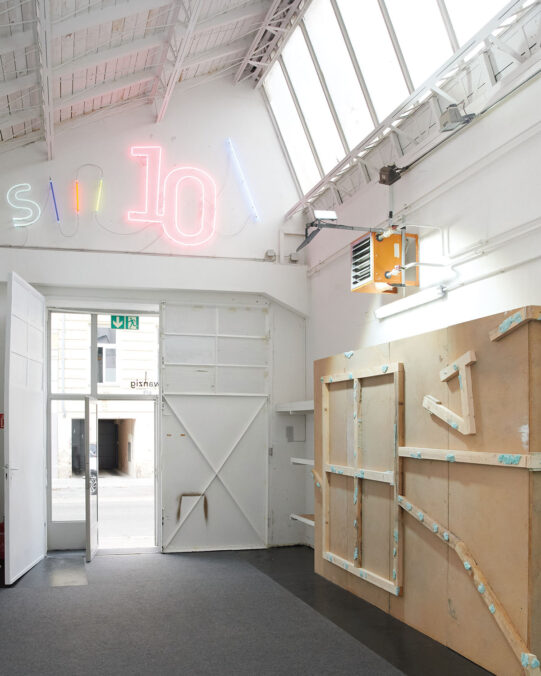
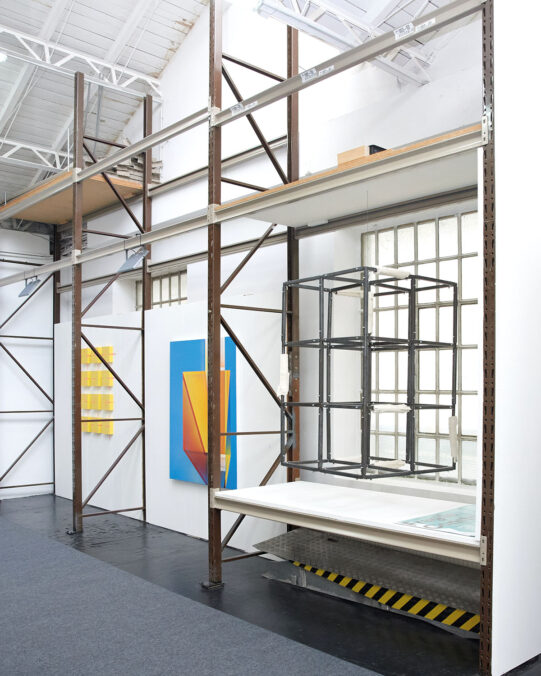
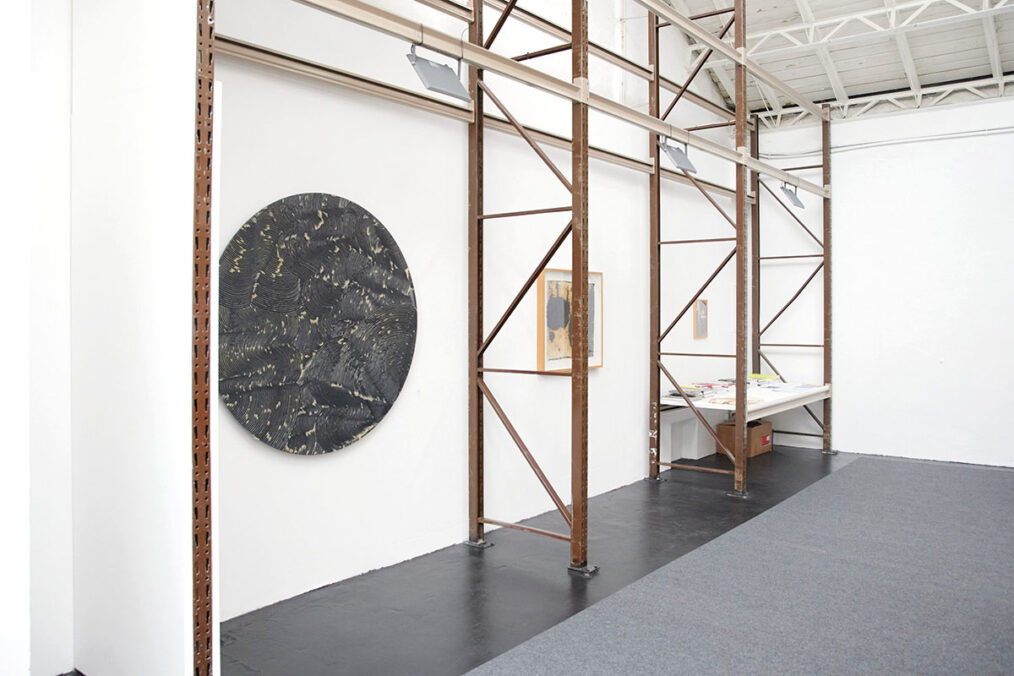
So, this industrial hall, a former factory, turned out to be ideal for the project. You’re located at Boschgasse 54 in the 19th district. What did the space look like before?
I’ve known the space for quite some time, and it had been vacant for about a year and a half. Previously, it was used by a painting company, so the floors were covered in paint, and there were high storage racks; it was clearly a working space. When I walked through the building, I already had a clear idea of what I wanted to do. The architecture works very well: there’s the large main hall with the areas that still have the high racks, and then in the back, there are three additional rooms that we use for presenting works.
What was the biggest challenge for you in the process?
The biggest challenge was convincing the landlord to agree on all this. After that, everything else was up to me to shape.
What an effort you put in to get everything so neat! How long did you and your team work on it?
We spent just under two months renovating the space. At the same time, I wanted to preserve its original character. With heavy machinery, we thoroughly cleaned the entire floor, then repainted it, laid new flooring, and painted the walls. I think we used around five hundred liters of white paint. We updated the lighting systems as well.
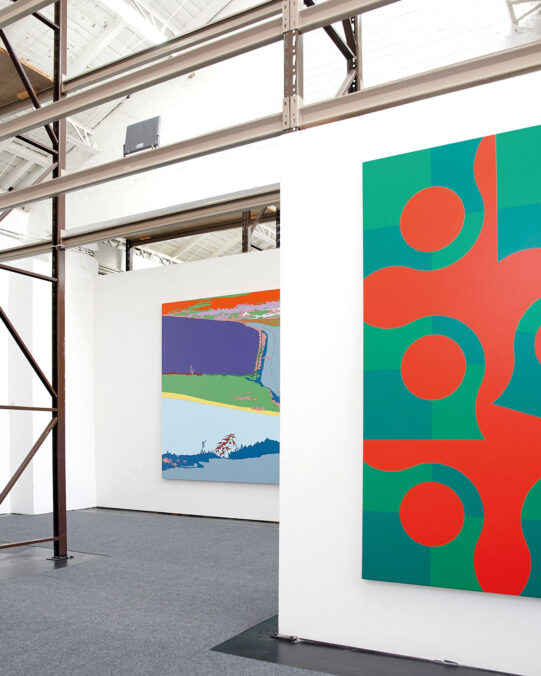
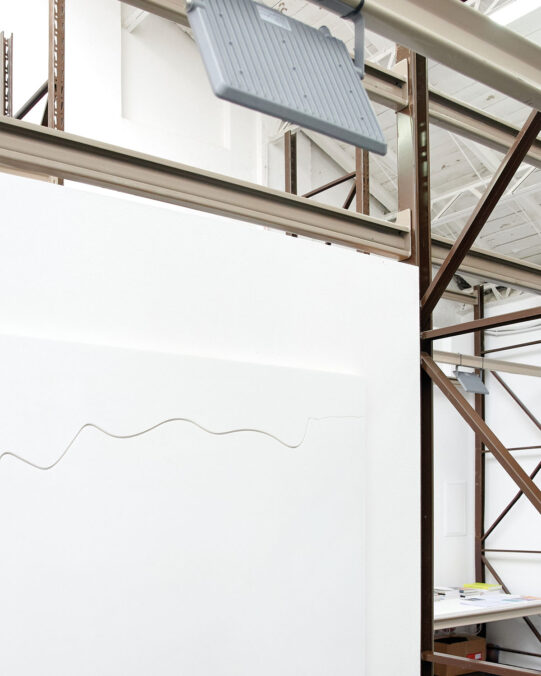
How large is the exhibition space?
Around 400 square meters.
What was your approach to the curation?
The starting point was the theme and title: Fragile Constructs. The gallery has a strong focus on Concrete Art, which I really love. I’m drawn to its clarity, its precision, its simple yet powerful forms. But I wanted to go beyond just shapes and materials. I also wanted to explore fragility in human relationships. Like materials, connections between people can be delicate. They can break or shift in an instant. That tension felt important to include.
How did you select the artists for the exhibition?
Some of the artists have already been presented in solo or group exhibitions at the gallery, so certain names were clear to us from the very beginning. At the same time, it was important to me to create a diverse mix and to include young, emerging artists. That’s why I did targeted research to bring them into the project as well.
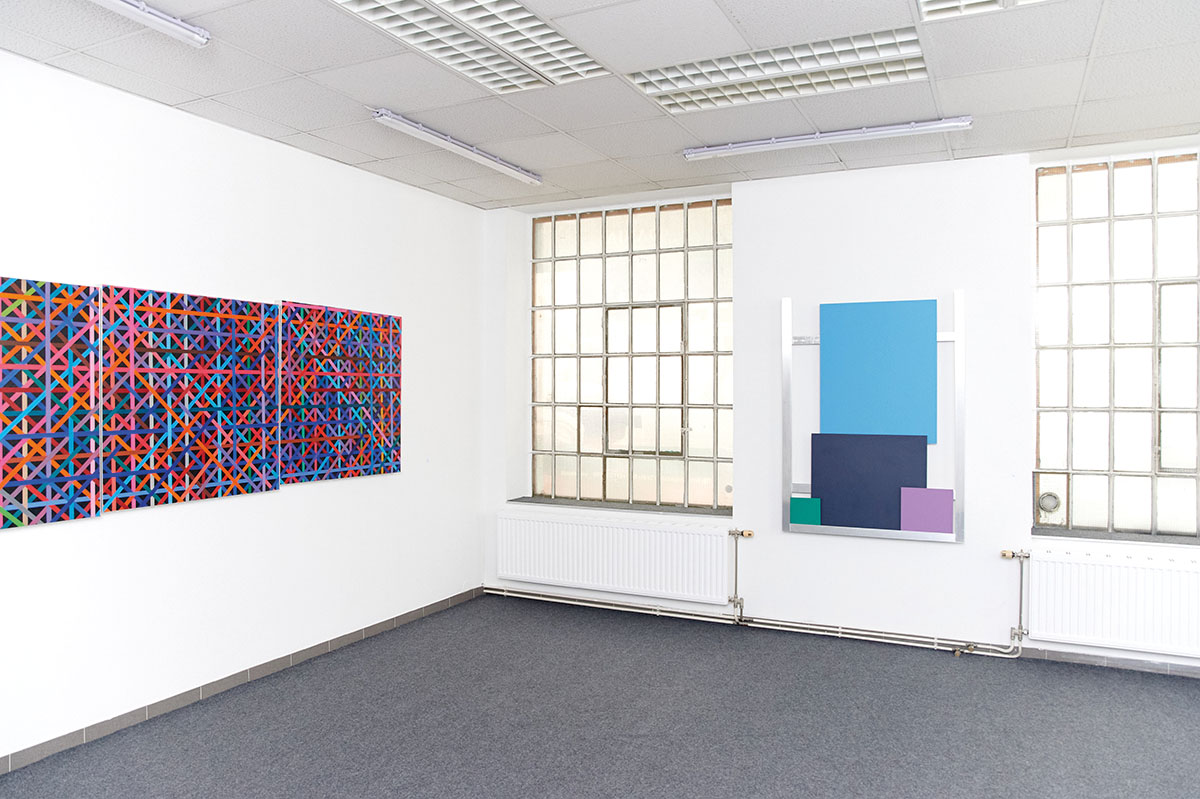
How many artists are featured? How many objects are there?
Forty-four artists are participating in the exhibition, presenting around fifty works in total. The curation of all the works came together so well that I only had to change one work from my original concept. Furthermore, the program features twelve additional performance artists and an artist talk.
Next to the fact that it’s spacious, it also has a certain fair-like character since each participant presents their work in individual booth-like spaces.
Yes, that’s certainly one way to look at it. It does have a kind of fair-like character, which I take as a compliment. Fairs are always associated with presenting oneself in the best possible way, whether it’s the organizer, the gallery, the artist, the setting, or the materials. At the same time, we’ve structured the exhibition into three, or rather four, areas: the large main hall and three smaller rooms.
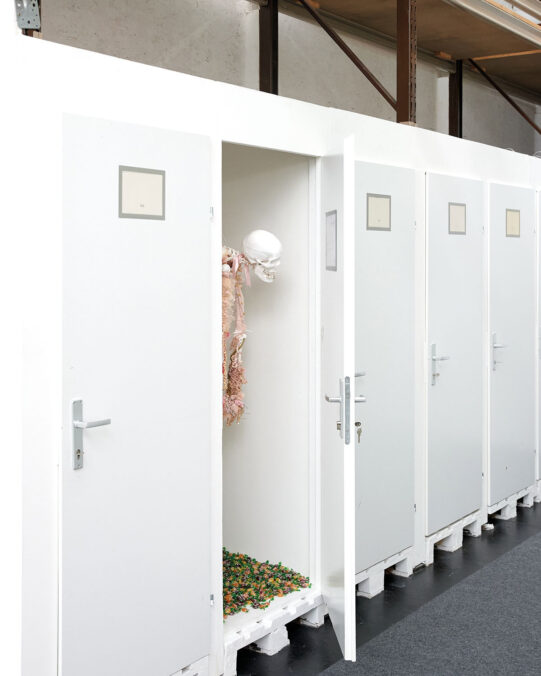
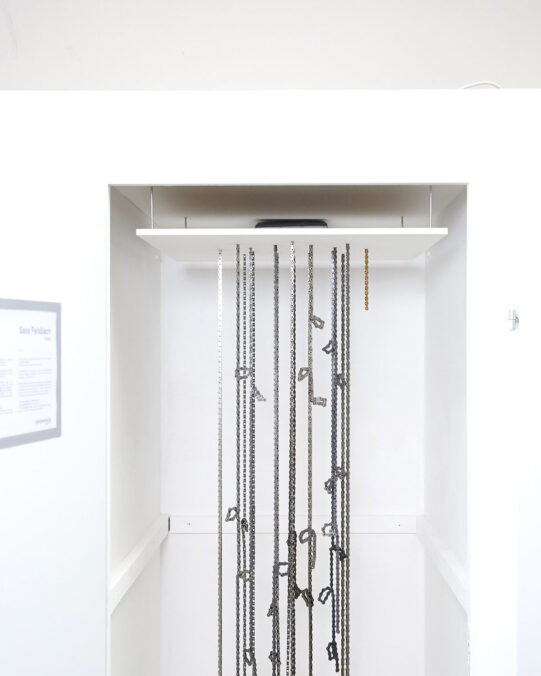
In the main hall, there are fourteen “micro constructs”, each one about one meter deep, eighty centimeters wide, and two meters high. You open the door of the small cabin and see the work of a single artist inside. The idea behind this is all about discovery, rediscovering art. The doors aren’t labeled with names; you open one and you can be surprised. From the very beginning, I integrated this into the concept so that visitors feel that sense of discovery, the moment when they encounter something entirely new.
Creating a program of performances and talks was also central to the exhibition’s concept.
Exactly, I wanted to further the exhibition to attract even more interested visitors throughout its run. One way we’re doing this is by offering performances and an artist talk. Highlights include the opening performance Hommage to K. by the artist duo Time Gates (Ben G. Fodor & Dorothee Frank), a music performance by Natia Kalandadze, Georg Kubla, Peter Kraus, and Elisabeth Penker, the live performance Dinner for Two by Kata Oelschligel and Joseph Sakoilsky, and an artist talk.
More program points will follow until the end of the exhibition. On October 25th, gezwanzig projects will conclude with the live performance Body Politic: The Constructed Existence of the Non-Existing by Tawsesak Molsawat.
It’s been about two weeks since the opening. How was your experience of it?
It was wonderful. I was overwhelmed by the number of people who showed interest. I want to extend my sincere gratitude to everyone who attended, shared their presence, and contributed to the event. You really made the opening such a special event. I also have to say that I thoroughly enjoyed it myself, thanks to the great team working behind the scenes who took care of everything. It was a joy to experience it all together.
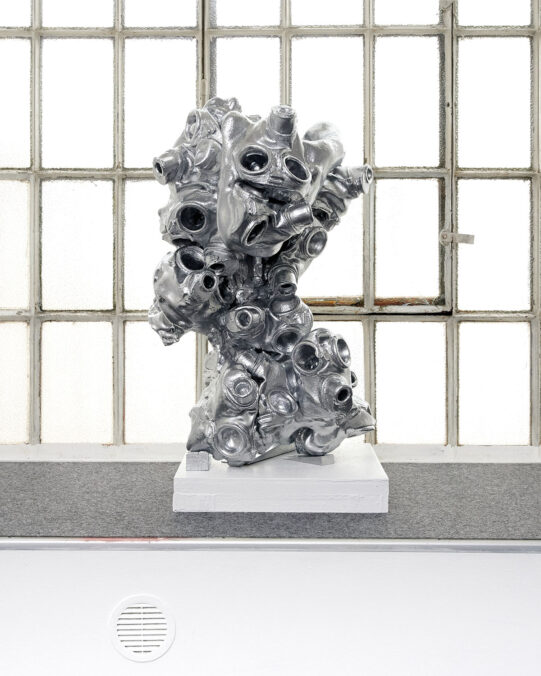
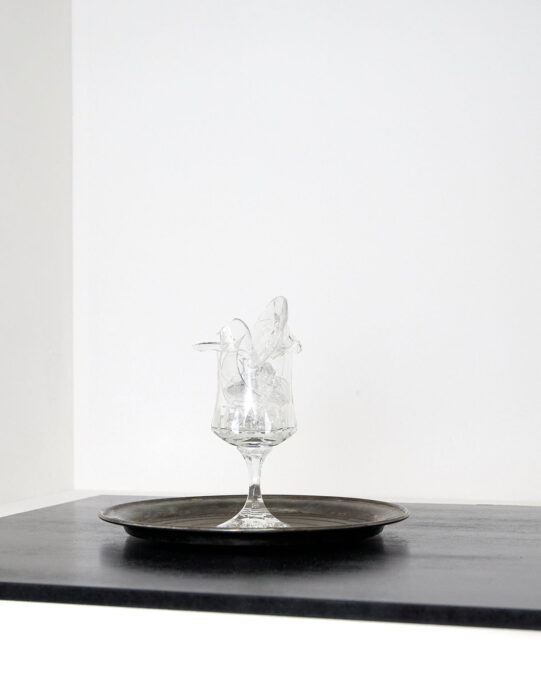
And what happens next?
We are already working on Fragile Constructs. Part 2. It will develop further from the current exhibition and its concept. Instead of featuring all forty-four artists, we’ll be focusing on five or six artists who will present additional works in the same space. Each of them will have significantly more room, which allows for a deeper and more immersive exploration of their work. I’m really excited about the way this will let visitors engage more closely with each artist’s practice.
Group Exhibition: Fragile Constructs
Duration: 4.10 – 26.10. 2025, Friday & Saturday 15-20, Sunday 15-19
Venue: Boschstraße 54, 1190 Vienna
Artists: Maria Belova (RU), Vanessa Mazanik (CZ/AT), Anna-Maria Bogner (AT), Daniel Mazanik (CZ/AT), Hellmut Bruch (AT), Moiz (AT), Sabrina Rosina Bühn (DE), Minami Miyajima (JP), Herbert De Colle (AT), Hermann Nitsch (AT), Linda Ebert (NO), Kata Oelschlägel (AT), Gregor Eldarb (PL), Elisabeth Penker (AT), Neva Felsbach (AT), Roman Pfeffer (AT), Sasa Felsbach (AT), Heti Prack (AT), Jakob Gasteiger (AT), Markus Proschek (AT), Time Gates (HU/AT), Bruno Rey (CH/AT), Edelgard Gerngross (AT), Arnold Reinthaler (AT), Sofia Goscinski (AT), Francis Ruyter (US), Miriam Hamann (AT), Isabella Salvo (ES), Gerhard Himmer (AT), Walter Seidl (AT), Christian Stock (EU), Christian Hutzinger (AT), Esther Stocker (IT/AT), Tamás Jovanovics (HU), Céline Struger (AT), Ma Jia (CN), Billi Thanner (AT), Parsa Khalili (IR), Art van Triest (NL), Sabine Mair (AT), Franz Türtscher (AT), Milana Maksiutova (RU), Erwin Wurm (AT)
More information: www.gezwanzig.com/fragile-constructs/
Address and contact:
gezwanzig gallery
Gumpendorfer Straße 20, 1060 Vienna, Austria
www.gezwanzig.com
www.instagram.com/gezwanzig/
The exhibition Fragile Constructs explores the fragility of orders, systems of meaning, and artistic realities in contemporary discourse. It serves as an invitation to make visible the structures, fractures, and transitions in the world around us and within ourselves. We live in a time in which seemingly stable constructs—societies, perceptions, systems of order, and entire worldviews—are beginning to falter.
From the smallest atom to the entire universe, everything is in motion, or rather, everything flows—as the ancient Greek saying “Panta Rhei” promises—and at the same time, anything can fall apart at any moment. Fragile identities can collapse in an instant, whether in the microcosm, interpersonal relationships, a highway bridge, climate conditions, or even entire planets, stars, and solar systems. This impermanence is not merely a state; it is a recurring law of nature.



